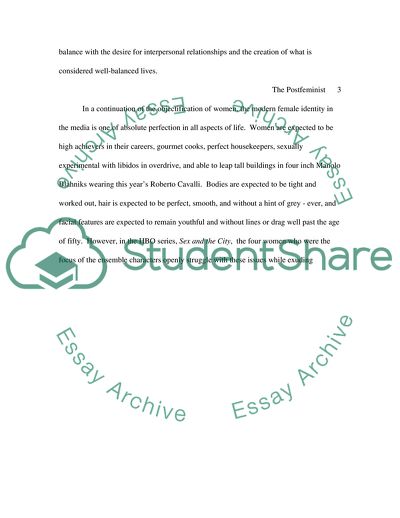Cite this document
(The Postfeminist Fairytale in Sex and the City Case Study, n.d.)
The Postfeminist Fairytale in Sex and the City Case Study. Retrieved from https://studentshare.org/gender-sexual-studies/1721155-what-kind-of-feminism-does-sex-and-the-city-represents
The Postfeminist Fairytale in Sex and the City Case Study. Retrieved from https://studentshare.org/gender-sexual-studies/1721155-what-kind-of-feminism-does-sex-and-the-city-represents
(The Postfeminist Fairytale in Sex and the City Case Study)
The Postfeminist Fairytale in Sex and the City Case Study. https://studentshare.org/gender-sexual-studies/1721155-what-kind-of-feminism-does-sex-and-the-city-represents.
The Postfeminist Fairytale in Sex and the City Case Study. https://studentshare.org/gender-sexual-studies/1721155-what-kind-of-feminism-does-sex-and-the-city-represents.
“The Postfeminist Fairytale in Sex and the City Case Study”. https://studentshare.org/gender-sexual-studies/1721155-what-kind-of-feminism-does-sex-and-the-city-represents.


